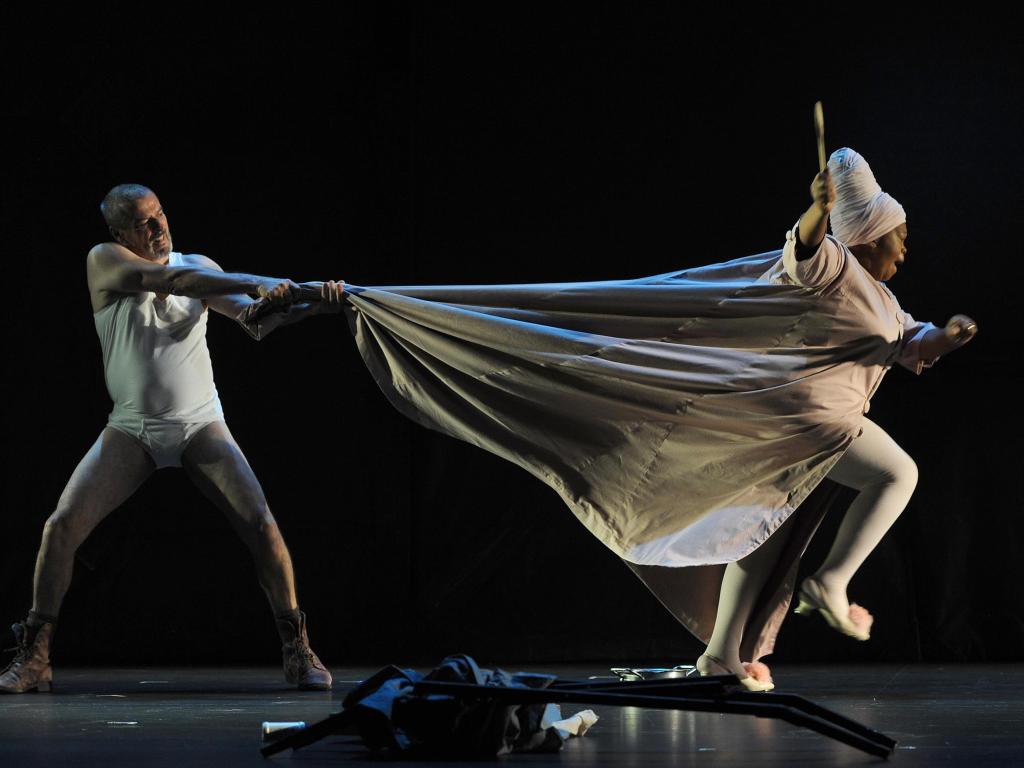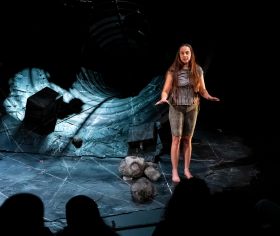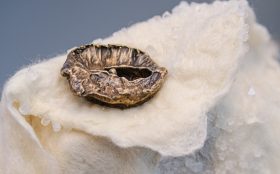Handspring Puppet Theatre’s Ubu and the Truth Commission premiered 18 years ago, a year after the first hearing of the Truth and Reconciliation Commission took place in Cape Town. South Africa was still reeling from the atrocities committed under apartheid and the Commission was meant to help the country heal. Witnesses, victims and perpetrators were invited to give testimonies, and the latter were allowed requests for amnesty.
Pa Ubu (David Minnaar) is a perpetrator. Named for the extravagant, self-serving tyrant in a play by 18th Century playwright Alfred Jarry, he prowls the streets at night with his three-headed dog – the heads representing a foot soldier, general and politician – and returns home smelling of blood and dynamite. His boisterous wife, Ma Ubu (Busi Zokufa), suspects philandering and puts his overlong showers to be down to attempts to wash off the scent of liquor and loose women. Instead, it is bones and body parts swirling down the plughole, as etched out in stark white-on-black animations by director William Kentridge and projected onto a screen centre stage.
Meanwhile, parents of victims come forward and tell their stories. These are true testimonies from the original Commission and they are told in various African languages by puppets much smaller in stature than Ubu’s dogs. Their testimonies are then translated into English, these steps creating a Brechtian distance between horror and audience and allowing us a more critical view. Nor are Ubu’s nighttime escapades described in any detail. Heartstrings are left under-plucked in favour of intellectual scrutiny, maintaining Ubu and the Truth Commission as a very cerebral play, and not necessarily an easy one.
In many ways, Ubu and the Truth Commission is both overcomplicated and oversimplified. Without some prior knowledge of the subject matter, it’s easy to get lost – the play allows a naïve audience few access points. While much of the politics and human depravity is recognisable in most countries of the world, the play is still highly symbolic and specific to its time; some aspects don’t translate well. At the same time, many of the points it seeks to hammer home become repetitive and prosaic.
The piece is highly critical of The Truth and Reconciliation Commission, or more specifically, of its policy of amnesty. The Ubus sail free at the end of the piece, left to carry on as before in some new land. Two out of three dog’s heads are barely punished. The villains are vocal and grossly extroverted and swan away from their crimes gleeful and unaffected; the victims remain small and carry the violence with them in sad perpetuity.
Ubu and the Truth Commission is a difficult, cerebral and complex piece of theatre, anchored in its time but attached to a long chain. The choice of its producers to hold its original form in this modern international tour will leave some audience members behind. Its relevance is slipping but its truths are universal.
The Handspring Puppet Theatre and PIAF present
Ubu and the Truth Commission
Performers: David Minnaar, Busi Zokufa
Puppeteers: Gabriel Marchand, Mandiseli Maseti, Mongi Mthombeni
Director: William Kentridge
Associate Director:Janni Younge
Writer: Jane Taylor
Puppet Designer: Adrian Kohler
Animator: William Kentridge
Choreographer: Robyn Orlin
Set and Costume Design: Adrian Kohler
Lighting Designer: Wesley France
Sound Designer: William Schubel
Music: Warrick Sony, Brendan Jury
State Theatre Centre of WA, Northbridge
24-28 February
Perth International Arts Festival 2015
www.perthfestival.com.au
13 February – 7 March





